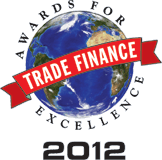
Mitigating Counterparty Risk in a Volatile Environment

|
By |
The 2008 credit crisis widened the range of risks that corporate treasurers need to manage to include the assessment and analysis of counterparty risk. Meanwhile, market volatility and uncertainty have focused the department on improving risk management techniques across the board. Indeed, as the core business continues to focus on selling goods and services, any unexpected financial disruption can prove devastating.
One corporate response to the financial crisis was the transferring of cash to more easily accessible accounts, as well as centralizing liquidity. Certainly, treasurers saw that strong liquidity management helped ensure funds were available to meet cash outflow commitments for day-to-day operations — no matter what the circumstances. Yet today's environment has made that all the more imperative — making not just a corporate's liquidity a concern, but also the entire value chain.
The supply chain has become globalized and the links between supplier and buyer have deepened. Many buying entities now work with a strategic supplier, who at some point could come under financial distress. As the Japanese tsunami demonstrated, a natural disaster can affect global supply chains and, in turn, heavily impact corporate performance.
Such concerns have triggered an interesting new trend in supply chain finance as corporates look for ways to support their strategic suppliers and avoid potential disruptions in advance. Companies selling goods mainly to one customer have realized the need to hedge their risk against that buyer. As shown by the events of March 2011, even highly successful companies with an apparently robust financial performance can face serious problems if they sell goods but find themselves caught unprepared by an unanticipated disruption.
Similar problems arise if the company places liquidity with a failing bank — thus understanding the amount of exposure to financial institutions is a key priority for risk managers. Indeed, right across the supply chain one difficult question has to be asked: What happens when a major business partner, bank or supplier goes out of business or is otherwise seriously disrupted?
Counterparty Risk
Of course, any corporate's financial reputation can be tarnished by the standing of its counterparty. So transparency is needed across all interlinked business processes to accurately review operational and financial health. The treasury department can assist by managing counterparty risk and analyzing exposure in three areas: credit, performance and country risk.
- Credit risk: The risks of not obtaining repayment of funds held by another party on your behalf, or not being paid monies due for goods or services already supplied, form the basis of credit risk. Corporates must understand and mitigate a supplier's credit risk position, and be prepared to manage the impact of a default.
- Performance risk: Certain operational risks need measuring to ensure the counterparty is able to perform or deliver on its side of the agreement. The monies may be available, but the facilities may not be in place to fulfill obligations set out in the contract.
- Country risk: Transacting in a new country brings new risks, including political and social unrest. These must be assessed and currency and banking practices analyzed. The legal framework may be less robust in one country than another, or safeguards not uniformly in place to mitigate risk from expropriation or nationalization, for example.
Assessing and Analyzing Counterparty Risk
In summary, corporates must take steps to reduce their counterparty risks by undertaking a deeper analysis into fundamental business processes. It is important to assess all elements of counterparty risk before making important business decisions. And a holistic view of the company's processes, extending beyond solely financial aspects, is a prerequisite.
Corporates should rigorously review the full operational landscape and analyze risks they may not have previously considered, such as bank counterparty risk. The review should include how the company sells goods to the client, how they purchase goods from the supplier and the resulting counterparty risks.
Once a risk is identified, appropriate tools and guidelines must be in place to monitor and track its potential implications across the supply chain. For instance, trade finance shows a clear market trend toward centralizing banking relationships. Increasingly, companies are aware that counterparty risk is connected to trade finance and look for tools that allow them to centralize while retaining the flexibility and efficiency of their processes.
Certainly, treasury centers must monitor their banking relationships in terms of where they place cash. This allows them to better understand the kind of risk to which they are exposed. Treasurers must also consider bank risk for routine actions such as confirming letters of credit and other documentary processes. And, finally, there needs to be consistent monitoring and tracking of risks with very detailed methods and procedures.
Risk management is a critical function. When credit is critical and liquidity a scarce commodity, counterparty risk must be properly assessed, analyzed and monitored across credit, performance and country to ensure the long-term health of the business. Selecting the right banking partner is crucial.
View other articles in this edition Settlement in Renminbi Creates Opportunities for US and Chinese Trading PartnersNext Generation Innovations in Trade Finance
Unlocking Potential: Trade and Cash Convergence
| Download a PDF |
| Comment on This Story |
| Suggest a Topic |
| Current Edition |
| Previous Editions |
| Visit Our Web Site |
| Recent Awards |
|
Trade Finance magazine Awards for Excellence, June 2012 • Best Trade & Supply Chain Bank in North America  Euromoney Trade Finance Survey 2012 • No. 1 Trade Finance Provider - US • No. 1 Trade Finance Provider - Brazil |